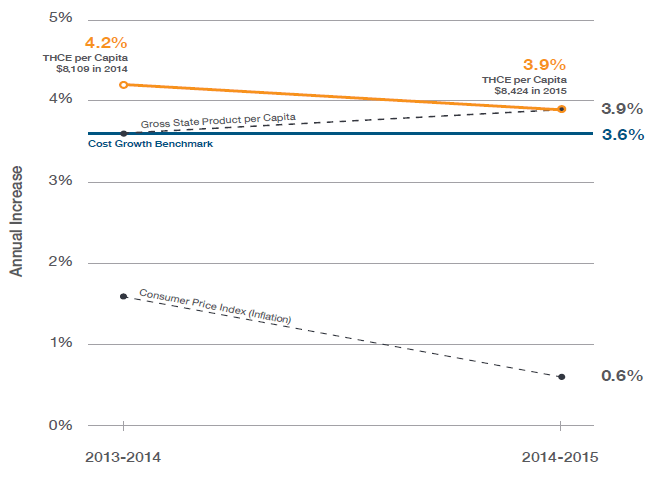Advertisement
Massachusetts — Just Barely — Misses Health Spending Target Again
Massachusetts came really close last year. The goal was to hold the rise in health care spending to 3.6 percent, roughly the rate of increase for other goods and services. But the cost of medicine, surgery, an MRI and other health care went up 3.9 percent in 2015.
“It’s a mixed bag,” said Lora Pellegrini, president of the Massachusetts Association of Health Plans. “The good news is that we’re growing slower than the national average. The bad news is that we missed the cost benchmark.”

The 3.9 calculation is part of a report from the state’s Center for Health Information and Analysis. Analysts say a 10 percent increase in spending on pharmacy drugs is one of the main reasons Massachusetts exceeded the cap.
“The report highlights key trends that underscore the importance of continuing to monitor this major sector of the Massachusetts economy,” said Andrew Jackmauh, a spokesman for CHIA.
This is the second year in a row that Massachusetts missed the self-imposed goal that took effect in 2013. In 2014, health care spending rose 4.8 percent. The main issue two years ago was the hike — 18 percent, according to the CHIA report — in the cost of care and rising enrollment in MassHealth. The government insurance plan's spending was closer to the state target last year — up 4.6 percent.
The report highlights some worrisome trends. The amount of money patients pay in addition to health insurance continues to rise — up 4.4 percent last year. Insurers argue that high deductible plans and more substantial co-pays help keep health care costs in check because they make patients think twice about whether they really need an expensive test or medicine.
“When everything was $5, in the old days, there was over-utilization,” Pellegrini said. “Often times folks weren’t really thinking about which institution or which doctor they were going to see because they were shielded from the cost.”
Massachusetts continues to be the only state that sets a cap, albeit a soft one, on overall health care spending. Insurers say they use it every day as leverage in talks with doctors, hospitals and clinics. Providers say “3.6 percent,” the benchmark, is a frequent reference point in hospital board rooms as well.
But some changes the cap was expected to trigger are not playing out. The movement toward global budgets, where providers are paid a fixed amount of money but given more control over how they spend it, slowed in 2015. Also 1.9 percent fewer residents with commercial health insurance were covered by an alternative payment plan last year as compared to 2014.
Massachusetts spent $8,424 per resident on health care in 2015 for a total of $57 billion. Some employers say that with inflation at 0.6 percent last year, they had trouble maintaining health insurance. Even if Massachusetts can meet the cap of 3.6 percent, it may not be low enough to make health care affordable for all.
